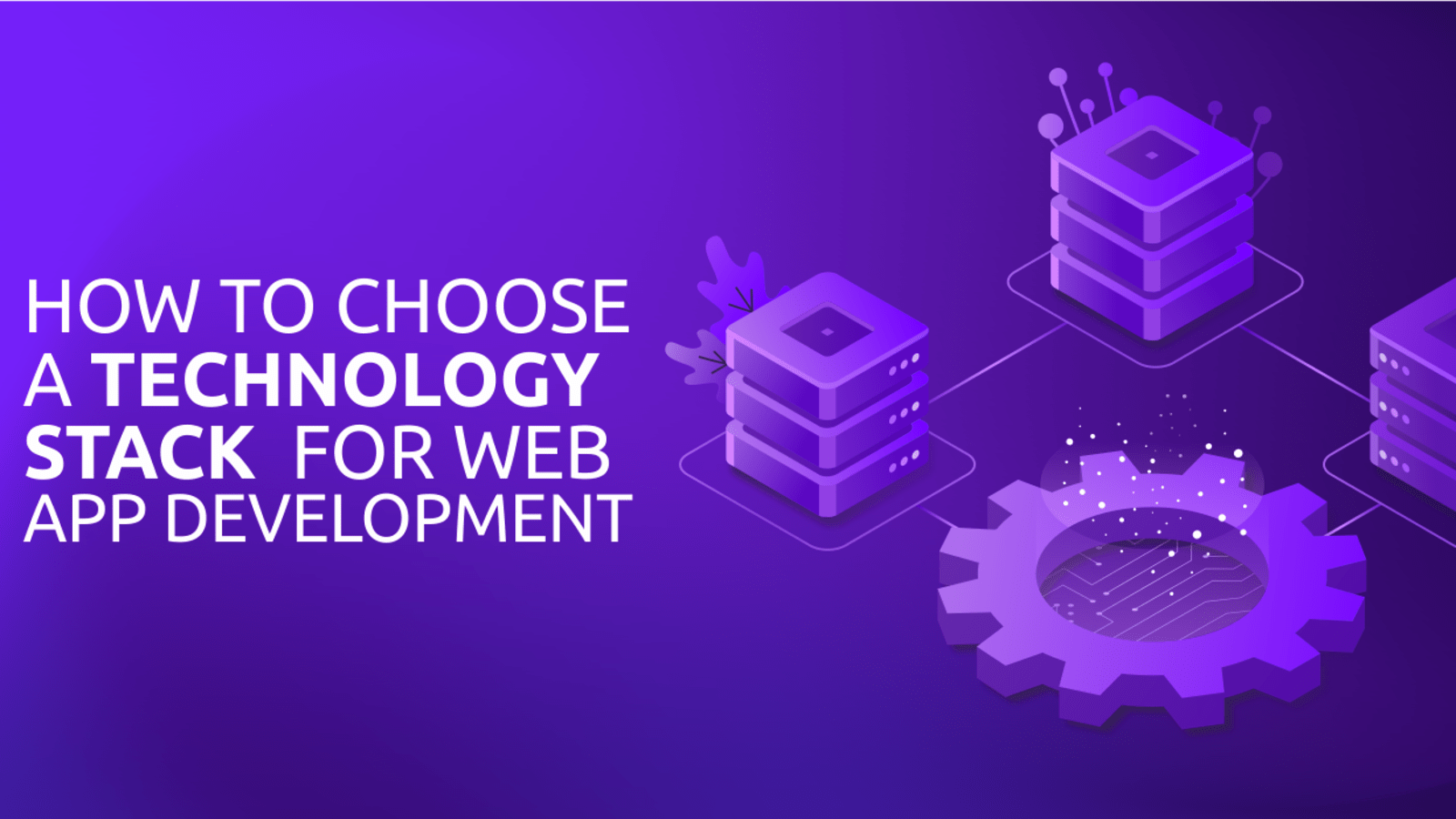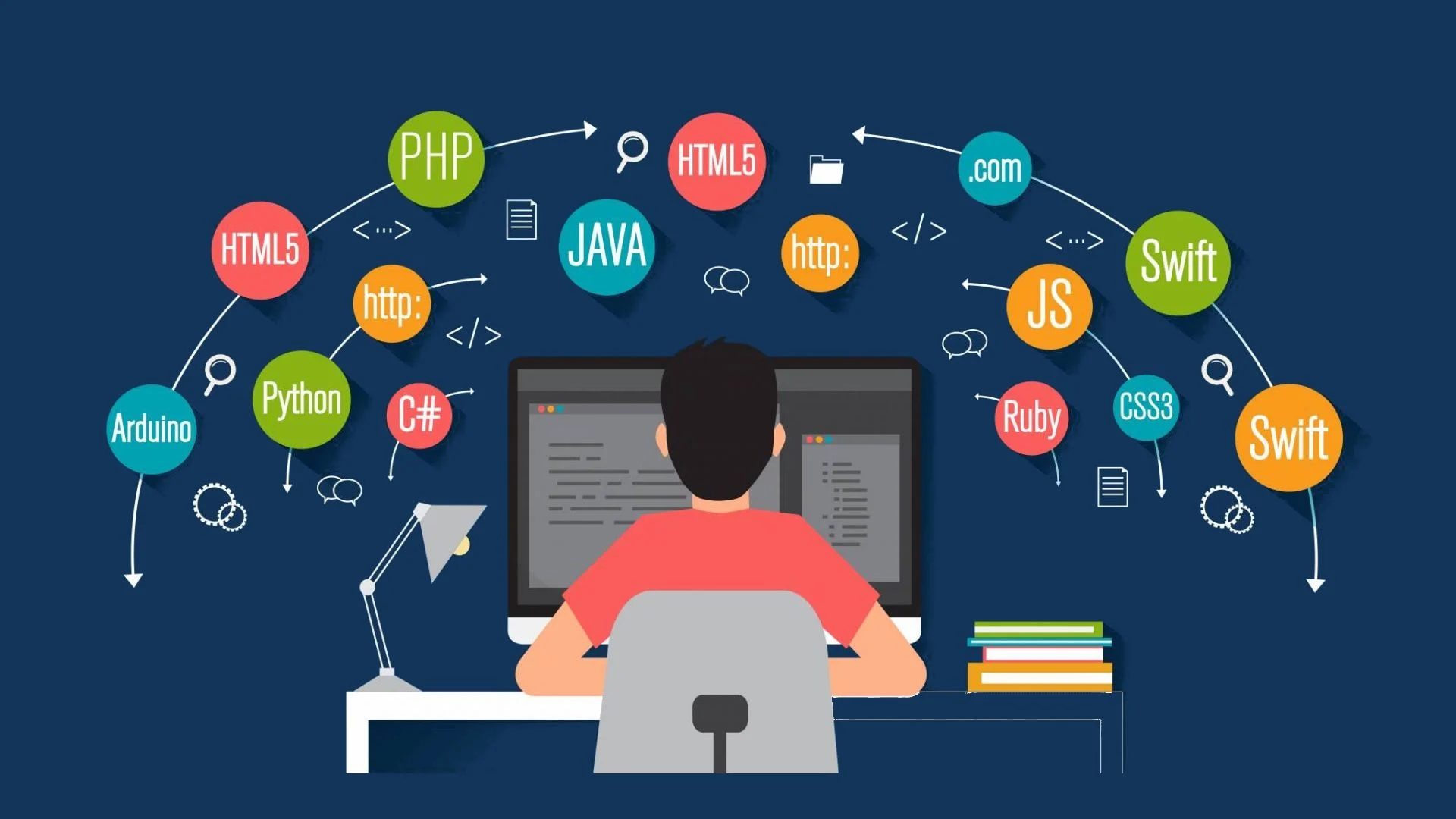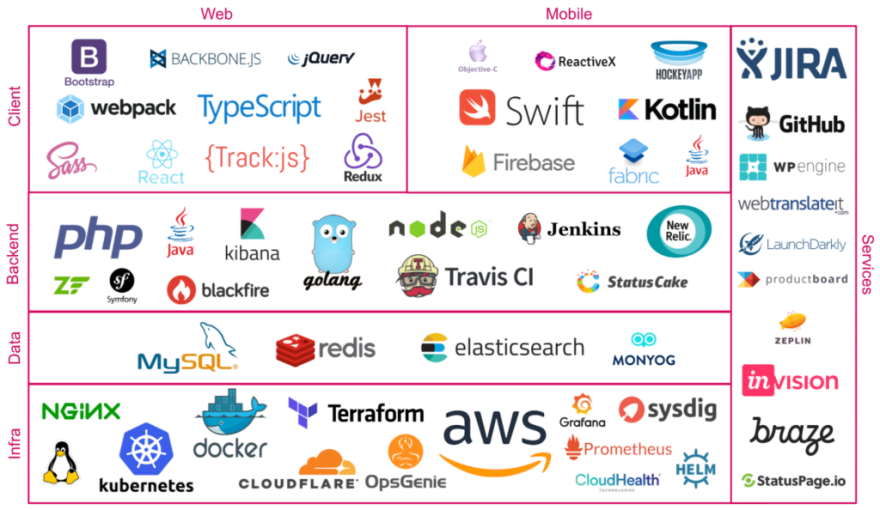What is a Tech Stack? How can you choose one for your project?

Choosing a tech stack for your next project? Then this article will make your job easier! If you are unfamiliar with the word “tech stack,” fear not. Below we’ll get into the basics of what a tech stack is and how you can choose one for your project? So read on to know everything you need to know about a tech stack, its components, and more!
What is a Tech Stack?

A tech stack is a collection of tools, programming languages, and frameworks developers use for mobile or web application development. Getting your tech stack right can be crucial for the success of any software development project. It can give you and your team the right tools to build and maintain your following product, an app, website, or something else.
Choosing the right tech stack can be beneficial for you and your client. When you are both on the same page, it increases the chances of success. So sit and talk about your next project aims to do and get down to all the broad and minute details. This is necessary as you need to make sure that your project starts on the right foot, or it may be destined for failure.
So what are the components of a tech stack? A tech stack primarily consists of two main parts. A front end or the client-side of the application and a back end or the server-side of the application. Both are equally important, and hence you need to get them right to ensure that your project is successful.
Below we will explain what a front end and a back end tech stack entails.
1. Frontend Tech Stack
The frontend tech stack is responsible for defining the visual portion of the website or application. This is the part that the users can see and interact with. The purpose of a good frontend tech stack is to pave the way for a smooth interface, seamless navigation, and a robust structure. So it is pertinent to choose the right frontend tech stack to provide an impeccable user experience.
A front end tech stack consists of the following elements:
- HTML: A hypertext markup language is a fundamental language used to create web pages. HTML is best described as the blueprint or the building block for any website or web app.
- CSS: Short for cascading style sheets used to design the format web pages. CSS includes colors, sizes, fonts, and layout, among other web page elements.
- JavaScript: JavaScript is a programming language that allows you to implement dynamic features on web pages. Developers do this with the help of various frameworks and libraries, which include but are not limited to Angular, React, jQuery, and Vue.
2. Backend Tech Stack
As previously discussed, a backend tech stack is the server-side of the application. It is the inner, concealed part of any website or web application that users cannot see. However, that does not make it any less critical. A backend is incredibly important for assuring that your web project runs smoothly behind the scenes without bugs or errors. Front-end and back-end tech stacks are equally important and valuable for your project.
Now let’s look at the elements of a back end tech stack:
- Programming languages: It would be impossible to create any web or mobile app without programming languages. These languages define the core function and operations of an application and, therefore, should be at the fingertips of web developers. Examples of programming languages commonly used in web development include Python, Java, C++, PHP, etc.
- Frameworks – it provides support for applications based on a single programming language. Popular frameworks include ASP.NET, Django, Ruby on Rails, Laravel, etc.
- Web Servers: Web servers are necessary for handling client requests. Popular web servers include Microsoft-IIS, Apache, LiteSpeed, Nginx, etc.
- Databases: The collection and storage of large amounts of data are possible with databases. They help in the storing, management, and retrieval of information. Most projects require a database that may be SQL or NoSQL. Popular databases used in web development are MySQL, MariaDB, MongoDB, and Redis.

How to choose a Tech Stack for your project?
Following are the basic principles of choosing the right tech stack for your project:
1. Personal Requirements
The first thing you want to know is to figure out what you want to accomplish with a particular project. Or in other words, which problem do you need to solve? Then choose a technology based on your needs. There are various programming languages, and each has its pros and cons. Take Java, for instance; the language is terrific for projects meant to be large scale with complex logic. Python could be the way to go for projects of a smaller scale, given its comparatively simplistic nature.
The same can be said for mobile apps. Mobile applications need to be carefully crafted. Analyze the market to assess user requirements and the competition and then choose what’s working. There is nothing wrong with taking inspiration from your competitors; however, you shouldn’t be copying them blatantly. If you do that, you may hit a dead end because every company has its infrastructure and resources and run in different ways. So it is imperative to check your requirements and how flexible they allow you to be when choosing a tech stack.
2. Scalability
Each tech stack is different and thus scales differently. When choosing a tech stack, it is essential to analyze if it will scale sufficiently in the future. If you want rapid growth with your next project, choose a tech stack that will allow you to do this. In this case, the ideal tech stack would be agile and flexible, with enough room to grow as required.
Moreover, see what type of growth you’re looking for. This can be horizontal growth achieved by equipping more processing units or physical machinery to your server. It can also be vertical. Vertical gain can be realized by improving your mobile or web application and adding new features. Therefore scalability is essential in this regard.
However, rapid growth may not be the utmost priority with some projects. So you can select other technologies that offer benefits that go beyond scalability.
3. Security
A breach in security or a data leak can halt your project and lead it into the abyss. If you don’t want your website or web app to go into a potential downward spiral, you need to prioritize security. Every programming technology has its vulnerabilities. Some are more secure than others. Hence choose certain technologies to mitigate the threat to the security of your project.
According to UpGuard, the following are the web programming languages with the most vulnerabilities:
| .NET | 31% |
| Java | 28% |
| ASP | 15% |
| PHP | 2% |
However, this in no way means that these languages should not be used. Just that you need be wary of the potential threats your project may run into in the future and how you need to keep that in mind when choosing a tech stack.
4. Scope of Project
Small-scale projects are generally faster to deliver and do not necessarily require advanced technologies and frameworks. You might need to quickly build up a minimum viable product (MVP), present it to the customer, and get valuable feedback. You might use simple tools and open-source platforms to reach that goal.
For mid-size projects, there is a greater level of technological involvement. Depending on the requirements, they may need a combination of several programming languages and frameworks. Such projects require more advanced technologies capable of delivering more sophisticated functionalities.
Social networks like Facebook, online marketplaces like Amazon, ERP systems, and other complex systems are developed with many programming languages and frameworks as multiple functions, integrations, and more security and sophistication are needed. Hence, the technology stack must be of a high level.
Conclusion
There can’t always be a one-size-fits-all approach when choosing the right tech stack for your project. Each project has its own needs and requirements, be it a website, web, or mobile application.
There is no single approach set in stone for choosing a technology stack. So you have to assess the goals of each project and the resources you have onboard to choose what best suits your needs. This may not be as easy as it sounds. With the continuous advancement in web development technology, new programming languages, libraries, and frameworks are emerging now and then. This results in far more alternatives making it even harder to make the right decisions.
But fret not because you can always get assistance if things go awry. If you find yourself stuck in a rut thinking about which tech stack to choose, software development services in Baton Rouge are there to lend you a helping hand.

